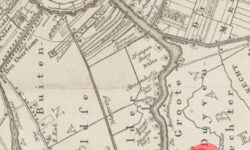De tuinen van Bierens aan de Amstel

Filling in some blanks: the couple owning a garden I wrote about, was looking for a new gardener in 1788. For Willem Roeters, one of the candidates, information about his previous experience pointed towards two now virtually unknown gardens. The ever increasing indexes of the Amsterdam Municipal Archives helped identify one of these gardens (or rather: two adjacent ones from one owner), a garden poem and even its head gardener. But it doesn’t seem to have been a garden where Roeters could have learned the craft of modern gardening. There still is one garden left to identify, though.
Filling in some blanks: the couple owning a garden I wrote about, was looking for a new gardener in 1788. For Willem Roeters, one of the candidates, information about his previous experience pointed towards two now virtually unknown gardens. The ever increasing indexes of the Amsterdam Municipal Archives helped identify one of these gardens (or rather: two adjacent ones from one owner), a garden poem and even its head gardener. But it doesn’t seem to have been a garden where Roeters could have learned the craft of modern gardening. There still is one garden left to identify, though.





